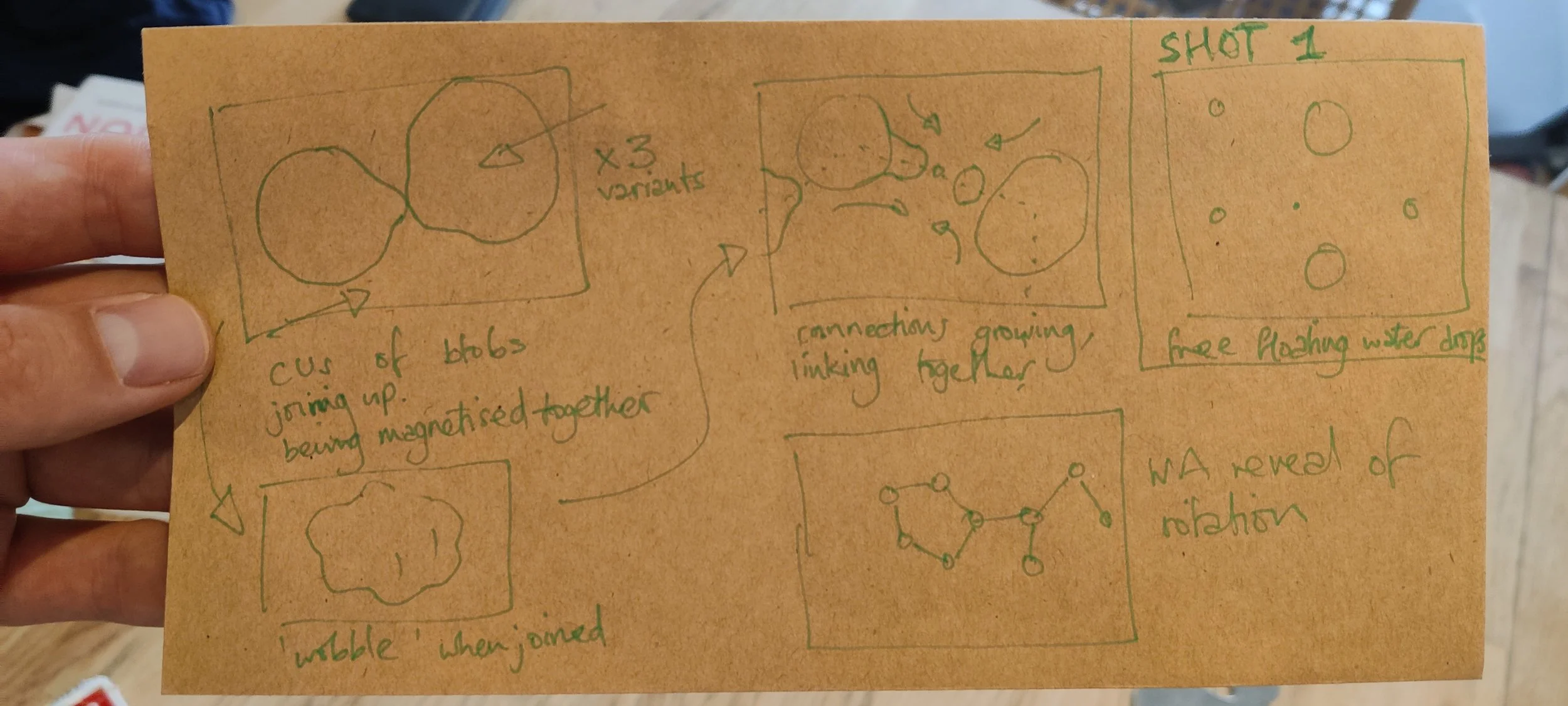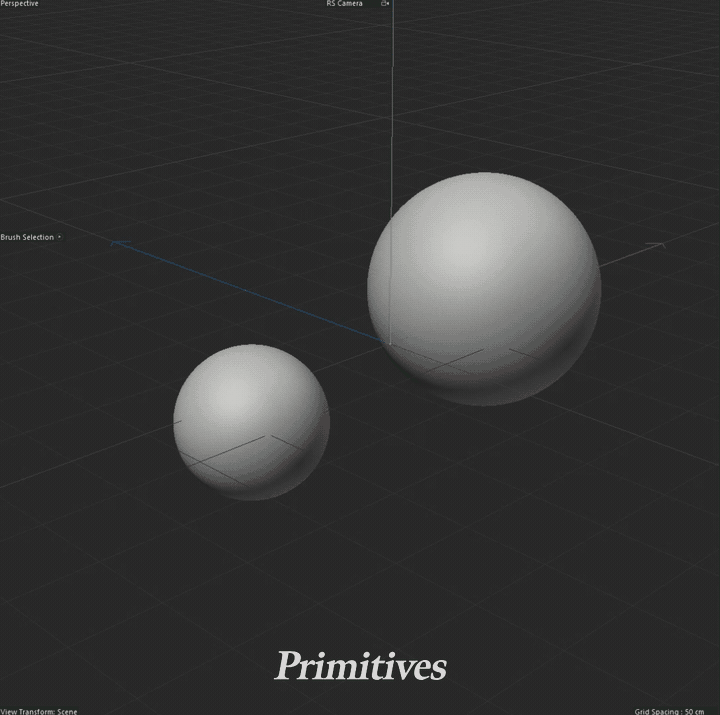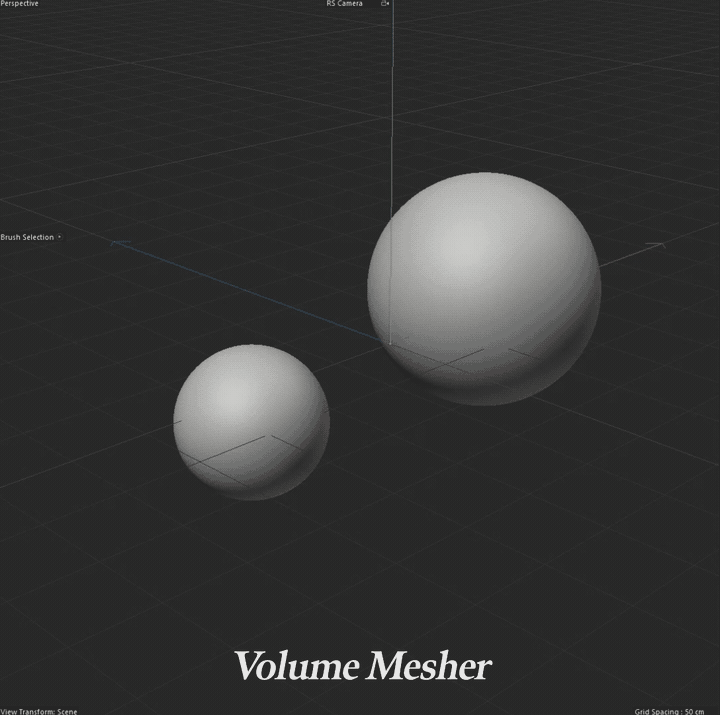Methodology
One route was to leverage Cinema 4D’s new water simulation system, which, on paper, sounded perfect. In practice, though, it’s not quite production-ready. Like many new tools that get released early, its scope is still narrow, or buggy, and after a few tests, I found better results doing it by hand.
AI couldn’t be ignored as an option, but I wanted full control over the scene and the final composition. Being able to manipulate every ripple and splash was important, plus the need to composite motion graphics over the final renders meant that generating AI-slop was, fortunately, off the table.
Using the classic approach, I started by animating primitive spheres to represent the push and pull forces acting on the mass of the water.






